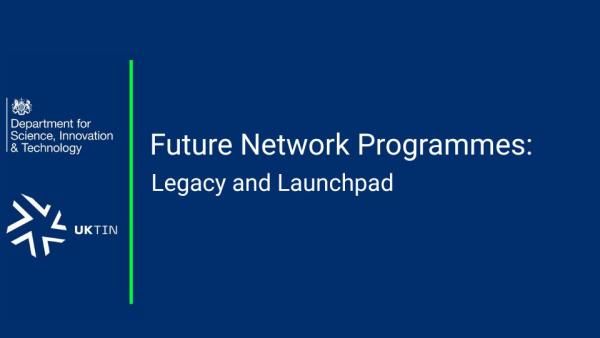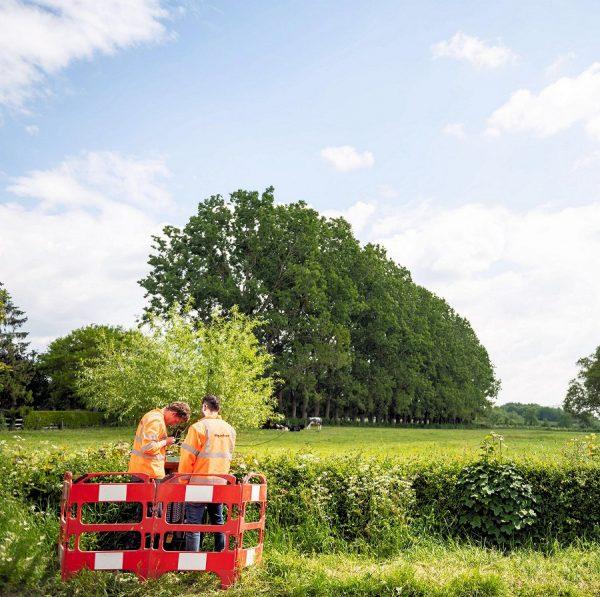
DSIT and UKTIN hosted Connected Reflections Live at The Minster Building on Wednesday the 19th of March. The exclusive showcase celebrated groundbreaking innovations, ecosystems, and market-shaping insights from the Future Network Programmes.
Keith Bullock, Director of DSIT’s Future Network Programmes opened the day by referring to the event as “an opportunity to gather everyone involved and reflect on what has happened. We also need to understand where digital infrastructure is heading, “ he said.
Bullock continued: “The UK government is interested in security and resilience and the economy relies massively on this infrastructure. It is a massive policy interest of ours. Growth is at the forefront of government, and technology adoption is a way to drive this. We need to have a vibrant competitive industry in its own right and have better services across the country. We have learned that if you want to generate growth and productivity improvements, do it through places that understand their people and businesses. You have spent seven years developing your skills and knowledge. If you don’t know, no one does.”
Ian Smith, Head of UKTIN emphasised the importance of bringing together industry experts and civil servants. “We are now seeing real networks come to life; they are solving real problems, and businesses are spinning out. We’ve done that.”
Sarah, Director of Digital Infrastructure at DSIT reiterated this, adding, “Your work is about connecting people and the government understands this work is not done. Technology is a driver of innovation, growth and making things better for people. The government cares deeply about digital inclusion and modernising infrastructure. There is also a real focus on defence and security. A number of your projects hit these priorities, particularly 5G Innovation Regions. If you have been involved, you have made a difference.”
Spotlight: A blueprint for doing things differently
- Perform Green: “How does a city deal with its revival? Got lots of people involved that can make a real difference,” said CEO and founder Barney Smith.
- North Ayrshire Council: “5GIR has helped us to remove barriers. Technology alone doesn’t transform a region, but ecosystems do,” commented Julia McMurdie, North Ayrshire Council.
- West Sussex: “How can technologies help the productivity of sectors and make them more sustainable? This is important for councils and regions,” said Jo Furber, West Sussex County Council.
- Telecom Infra Project: “There is a commonality of requirements in general. TIP brings interested members together,’ concluded Vishal Mathur, Global Head of Engagement.
Panel: Exploring the Future of Open RAN
Led by Will McKinnon, Outcome Lead, Strategy and Policy at DSIT, experts discussed the network’s opportunities and challenges
McKinnon said: “Open RAN is beginning to be deployed at scale and we are a pioneer in this space. DSIT’s programme has made a lot of progress. And yet, a huge amount of work is still to be done. Getting any vendor into a public network is very difficult. However, we are only five years into the journey.”
Steve Unger, Senior Advisor, commented: “The problem consumers face is the quality of mobile coverage. How can we improve the experience for ordinary people? This doesn't mean the Open RAN journey wasn’t worth it, but it is very complicated. We’re talking about ten different versions of a standardised network. That isn’t a standard. In our attempts to standardise, I worry we risk tying things down too early.”
Howard Benn, CEO of Benn Consulting continued: “We now have new bits of hardware that are specifically designed. The radio hardware is maturing, and smaller vendors are entering the market. But where do we go next? The operators in the UK operate on small profit margins, some of the smallest in the world. That’s thanks to the regulator, because of competition. But the downside is that operators don’t have enough money to spend.”
Panel: Changing Market Dynamics and Creating Opportunity for Technology Exploitation and Innovation
Chaired by Anne McLister, Technical Advisor, Future Networks Team, DSIT, panellists emphasised the importance of creating opportunities for technology exploitation and innovation
Andrew Miles, Chief Architect, Telet Research said: “If you came to us a few years ago and said you want to deploy a network, we’d say how? How do you get spectrum? How do you get the equipment? How do you get the equipment? We’ve got access to all those things now, whether in Liverpool or the Welsh Valley. Spectrum has become transformational and the UK is in the lead.”
Marcus Dorling, Client Director at Boldyn Networks noted: “No one technology is serving the UK’s places. In Sunderland, we have many solutions that better people’s lives. Telecoms is opening up and end-user outcomes are improving, regardless of the technology. It’s about coverage and geographical footprint. At Boldyn Networks, we take a long-term view and I think it’s needed.”
Ashleigh Jordan, Business Development Manager at Vodafone, added: “We take a regional approach. The UK needs to focus on where it is putting the infrastructure and ensure it’s reliable. We know interventions take a long time but we need to do something right now. We are particularly positive about what satellite can bring to rural communities. ”
Alastair Davidson, Director of Wireless Infrastructure Group commented: “We look to the mobile operators whose services we enable but also to places for collaboration. We have an agreement with Birmingham. They helped us to engage with the traffic and permitting team. We are also deploying in the Shetlands. We are even challenging non-domestic rates in Scotland on small cells. We are not giving up yet.”
Panel: Benefits of shared infrastructure
Steered by Dejan Bojic, Director of High Summits Consulting, speakers discussed the advantages for enterprises and verticals vs consumers
Mike Barlow, Sales Director at Ericsson Enterprise said: “We’ve all been somewhere where you struggle to get a network: 80% of public access is indoors. Solving this in an indoor environment is critical. Once it’s in and working, use cases grow and develop. You can see that at Belfast Harbour now. We also grew our 5G private network by 135% last year and expect the same this year. People think everything can be delivered on Wi-Fi but that’s not true.”
Aparajithan Sivanathan, Head of Digital Technology at AMRC added: “When a private network is shared between different departments, everything becomes relevant – what happens when a shared network is handled differently? Then, there’s shared infrastructure – perhaps not just in one business, but across the supply chain. There are unique challenges. The business case has a long way to go.”
Adam Withers, Practice Lead at Boldyn Networks said, “Adoption of shared infrastructure has been slower than we’d like. The technology is there but the market hasn’t adopted it. However, I’ve been talking to people working on 5GIR and they are use-case stacking. We have come a long way and are moving in the right direction, but it’s taken too long. We need to accelerate. The UK has an interesting set of conditions to make this work.”
Bullock discussed the next steps for telecoms in the UK. He explained that decisions about 2027 and beyond are being made and the government will continue to play a role in digital infrastructure. However, future input will focus on applying technologies, not discovering them. He noted that the industry can do more to help the government stack its use cases: “The more your voices are heard, the better”.
The day concluded with a presentation for the Future Networks Awards, celebrating the programme’s achievements. The winners are listed below:
- Ecosystem Excellence: ON-SIDE
- Incremental Innovation: HiPer-RAN
- Radical Breakthrough: The River Severn Partnership Advanced Wireless Innovation Region
- Start-up and Spin-out Success: Neutral Wireless
- Place-Based Impact: North East Innovation Region
- Shared Infrastructure Advancement: Real Wireless Spectrum Sandbox
- Breaking Barriers: FoFoRAN
- Special Award: Yo-RAN









